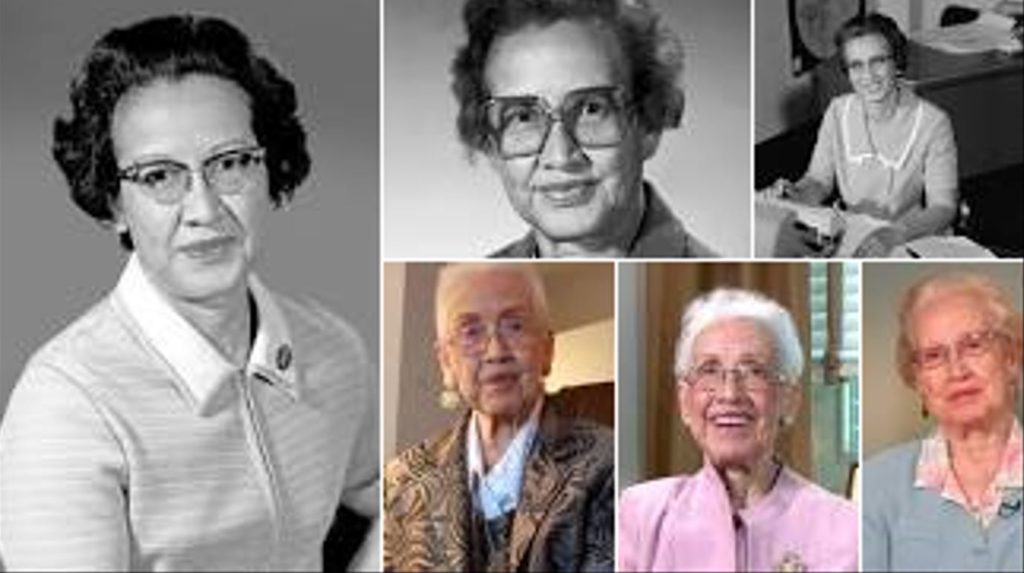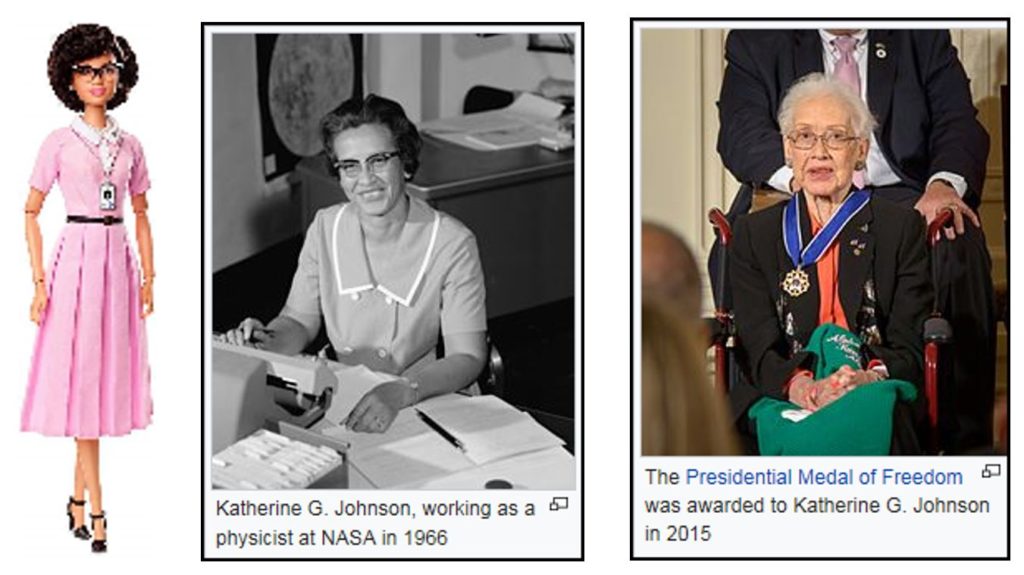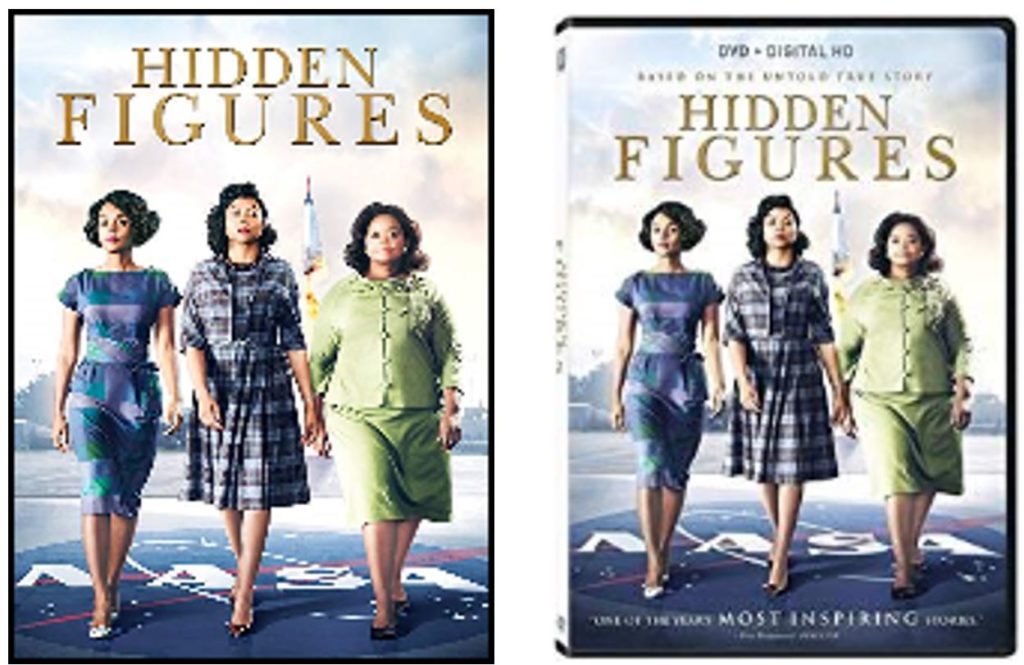 By Neenah Payne
By Neenah Payne
Sputnik and The Dawn of the Space Age says:
History changed on October 4, 1957, when the Soviet Union successfully launched Sputnik I.… That launch ushered in new political, military, technological, and scientific developments. While the Sputnik launch was a single event, it marked the start of the space age and the U.S.-U.S.S.R space race….The Sputnik launch changed everything. As a technical achievement, Sputnik caught the world’s attention and the American public off-guard….The Sputnik launch also led directly to the creation of National Aeronautics and Space Administration (NASA).
The US had to get into space quickly to save face! Three brilliant African-American women at NASA — Katherine Johnson, Dorothy Vaughan, and Mary Jackson — served as the brains behind one of the greatest operations in history: the launch of astronaut John Glenn into orbit, a stunning achievement that restored the nation’s confidence, turned around the Space Race, and impressed the world.
Before the invention of modern computers, the word “computer” applied to people whose job it was to perform calculations. The success of America’s space race depended on Black women computers – especially Katherine Johnson. John Glenn refused to go into space until Mrs. Johnson’s calculations assured his safe return! So, America would not have gotten to the moon without her! Yet, Mrs. Johnson and the other Black women computers at NASA had to go outdoors in any weather to walk across campus to use the bathroom because bathrooms were still segregated in the 1960s!
The article 9 Fascinating Facts About Katherine Johnson says:
Astronaut John Glenn’s three orbits around Earth in 1962 marked a pivotal moment in the Space Race between the U.S. and Russia. His may be the face most people remember, but…Johnson played an important part in getting him off the ground. The orbital equations used to choreograph his mission had been uploaded to a computer, but this being the early 1960s, electronic calculators still weren’t a totally reliable method for handling sophisticated equations….Glenn requested that Johnson check the computer’s work by redoing all the math by hand, saying, ‘If she says they’re good, then I’m ready to go.’ The flight went off without a hitch.
Johnson Helped Fulfill JFK’s Mission to Reach the Moon
President Kennedy Challenges NASA to Go to the Moon says:
“In an address to Congress on “Urgent National Needs” on May 25, 1961, President John F. Kennedy called for America to send astronauts to the moon and return them safely to Earth before the end of the decade.” He said, “No single space project will be more impressive to mankind and none will be so difficult to accomplish”.
Because it is There: President Kennedy on the Exploration of Space pointed out:
Most people know only one line from President John F. Kennedy’s 1962 Rice University speech: “We choose to go to the Moon…not because it is easy, but because it is hard.” This is deeply unfortunate, as the entire, 18-minute speech is a rousing and thrilling piece of prose about our obligations for celestial exploration.
The article 9 Fascinating Facts About Katherine Johnson adds:
SHE HELPED SEND THE FIRST MEN TO THE MOON. The same year John Glenn made his historic journey, NASA received orders from President John F. Kennedy to get to work on a more ambitious mission: sending a manned shuttle to the moon. This trip would require even more calculations, and Johnson once again played a significant role. She worked with NASA’s team of engineers to pinpoint the time and location of departure that would put astronauts on track for the moon. The Apollo moon landing program was a success, and arguably one of the most famous events in the history of space travel.
In 2015, President Barack Obama awarded Mrs. Johnson the Presidential Medal of Freedom. She was born August 26, 1918 and lived until age 101 with a very sharp mind although she was in a wheelchair. West Virginia State University, her alma mater, commemorated her 100th birthday with a statue. A demure Barbie Doll with glasses inspires young girls to emulate Mrs. Johnson.
The video “Great Minds: Katherine Johnson, Human Computer” explains the significance of Mrs. Johnson’s contributions to America’s space race. It says: “In the early days of spaceflight, if NASA needed to plot a rocket’s path or confirm a computer’s calculations, they knew who to ask: Katherine Johnson.”
In the video “NASA Mathematician Katherine Johnson Makes People’s List of 25 Women Changing the World”, Mrs. Johnson discusses her role in launching astronaut John Glenn into orbit. Her daughters explain that they didn’t find out until college – and only from newspapers – exactly what their mother had been working on since her work was secret!
Hidden Figures: Book and DVD
However, Mrs. Johnson is just one of the “hidden figures” responsible for the success of America’s space program. The 2016 book Hidden Figures: The American Dream and the Untold Story of the Black Women Mathematicians Who Helped Win the Space Race and the film Hidden Figures (available on Amazon Prime) tell the story of the Black women “computers” who helped win the space race for America.
Their success is all the more remarkable given the educational and employment barriers at the time not only to African Americans but to all women.
Amazon says:
The phenomenal true story of the black female mathematicians at NASA….whose calculations helped fuel some of America’s greatest achievements in space—a powerful, revelatory contribution that is as essential to our understanding of race, discrimination, and achievement in modern America…. The basis for the smash Academy Award-nominated film starring Taraji P. Henson, Octavia Spencer, Janelle Monae, Kirsten Dunst, and Kevin Costner.
Before John Glenn orbited the earth, or Neil Armstrong walked on the moon, a group of dedicated female mathematicians known as “human computers” used pencils, slide rules and adding machines to calculate the numbers that would launch rockets, and astronauts, into space.
Among these problem-solvers were a group of exceptionally talented African American women, some of the brightest minds of their generation….Even as Virginia’s Jim Crow laws required them to be segregated from their white counterparts, the women of Langley’s all-black “West Computing” group helped America achieve one of the things it desired most: a decisive victory over the Soviet Union in the Cold War, and complete domination of the heavens.
The fascinating and inspiring video “NASA Invites Media to Talk with Cast of Hidden Figures” interviews the cast of the film NASA’s Kennedy Space Center. The director of the film talks about the unconscious bias against Blacks and all women that impede educational and job opportunities.
Katherine Johnson Lived to Age 101
The 2/24/20 New York Times article Katherine Johnson Dies at 101; Mathematician Broke Barriers at NASA said:
She was one of a group of black women mathematicians at NASA and its predecessor who were celebrated in the 2016 movie “Hidden Figures.” They asked Katherine Johnson for the moon, and she gave it to them. Wielding little more than a pencil, a slide rule and one of the finest mathematical minds in the country, Mrs. Johnson, who died at 101 on Monday at a retirement home in Newport News, Va., calculated the precise trajectories that would let Apollo 11 land on the moon in 1969 and, after Neil Armstrong’s history-making moonwalk, let it return to Earth.
The article adds:
A single error, she well knew, could have dire consequences for craft and crew. Her impeccable calculations had already helped plot the successful flight of Alan B. Shepard Jr., who became the first American in space when his Mercury spacecraft went aloft in 1961. The next year, she likewise helped make it possible for John Glenn, in the Mercury vessel Friendship 7, to become the first American to orbit the Earth.
Yet throughout Mrs. Johnson’s 33 years in NASA’s Flight Research Division — the office from which the American space program sprang — and for decades afterward, almost no one knew her name. Mrs. Johnson was one of several hundred rigorously educated, supremely capable yet largely unheralded women who, well before the modern feminist movement, worked as NASA mathematicians. But it was not only her sex that kept her long marginalized and long unsung: Katherine Coleman Goble Johnson, a West Virginia native who began her scientific career in the age of Jim Crow, was also African-American.
The article points out:
In old age, Mrs. Johnson became the most celebrated of the small cadre of black women — perhaps three dozen — who at midcentury served as mathematicians for the space agency and its predecessor, the National Advisory Committee for Aeronautics. Their story was told in the 2016 Hollywood film “Hidden Figures,” based on Margot Lee Shetterly’s nonfiction book of the same title, published that year. In January 2017 “Hidden Figures” received the Screen Actors Guild Award for outstanding performance by a cast in a motion picture. The film was nominated for three Oscars, including best picture. Though it won none, the 98½-year-old Mrs. Johnson received a sustained standing ovation when she appeared onstage with the cast at the Academy Awards ceremony that February.
In 2015, President Barack Obama awarded her the Presidential Medal of Freedom, proclaiming, “Katherine G. Johnson refused to be limited by society’s expectations of her gender and race while expanding the boundaries of humanity’s reach.” In 2017, NASA dedicated a building in her honor, the Katherine G. Johnson Computational Research Facility, at its Langley Research Center in Hampton, Va.
Subscribe to Activist Post for truth, peace, and freedom news. Become an Activist Post Patron for as little as $1 per month at Patreon. Follow us on SoMee, Flote, Minds, Twitter, and Steemit.
Provide, Protect and Profit from what’s coming! Get a free issue of Counter Markets today.




Be the first to comment on "Black Woman “Computer” Saved America’s Space Program"